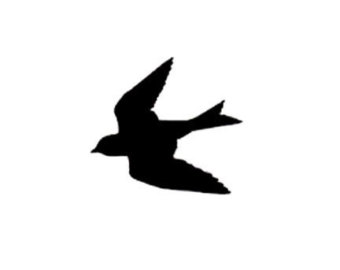The guild of ‘aerial insectivores’ – birds that specialize on feeding on flying insects – includes Whip-poor-wills, nighthawks, swifts, swallows, martins, and flycatchers. Early results from the second Ontario Breeding Bird Atlas indicated some startling declines and even range contractions for this guild. Now that the 2001-2005 Ontario Atlas is complete, the plight of aerial insectivores is gaining increasing attention. The patterns of decline are mirrored very closely by the Breeding Bird Survey, not only in Ontario, but also across much of North America. Early results from the second Maritimes Breeding Bird Atlas and data from the recently completed second New York State Atlas also point to similar patterns. The magnitude of the declines, especially within the past 20 years or so, is alarming. The proverbial clock may well be ticking down on many common species of aerial insectivores in Canada. In the last two decades alone, populations have fallen by over 70% in the case of Bank Swallow, Common Nighthawk, Chimney Swift, and Barn Swallow, and by over 50% for Cliff Swallow, Olive-sided Flycatcher, Eastern Wood-Pewee, Northern Rough-winged Swallow, Eastern Kingbird, and Purple Martin. Declines have been so severe that Chimney Swift, Common Nighthawk, and Olive-sided Flycatcher were recently designated as nationally Threatened species. Barn Swallow, Bank Swallow, and Eastern Wood-Pewee may not be far behind.
Source:
Jon McCracken, Bird Watch Canada WINTER 2008, NUMBER 42, 4-7 (attached)

- Log in to post comments

Jon McCracken lists possible causes except the obvious: NEONICS
Neonicotinoid insecticides as nearly as persistent as DDT, and leach into groundwater and run off to surface water. They bind to nicotinic acetylcholine receptors in the CNS, and receptor binding is virtually irreversible. The dose:response characteristics of insecticidal action are reminiscent of those of genotoxic carcinogens, where exposure time reinforces lethal action. A safe exposure level does not exist. All ingredients are there to wipe insects from the face of the Earth, and IT IS HAPPENING BEFORE OUR EYES ! Aerial insectivores stand no chance because there are not sufficient insects to survive.